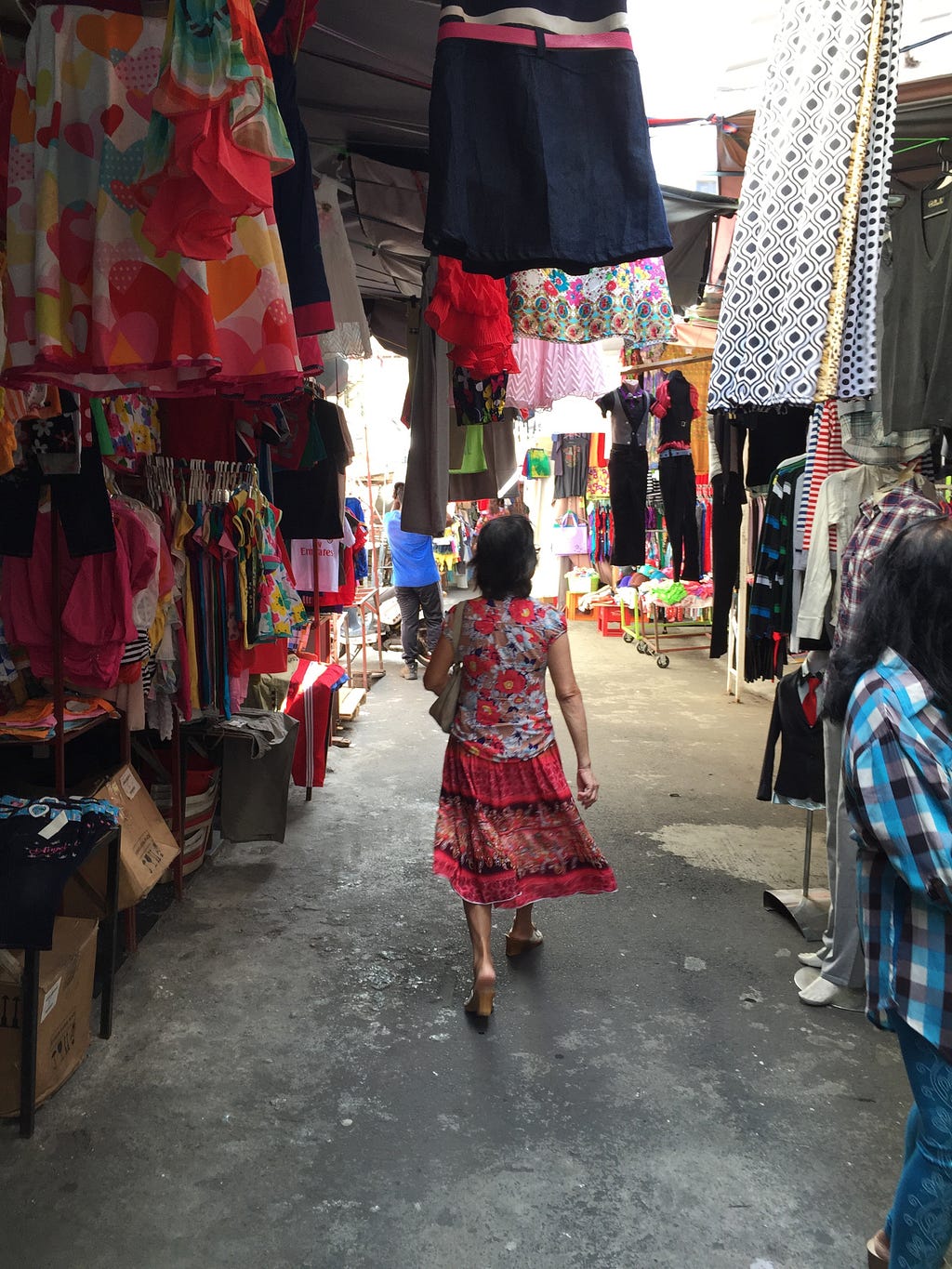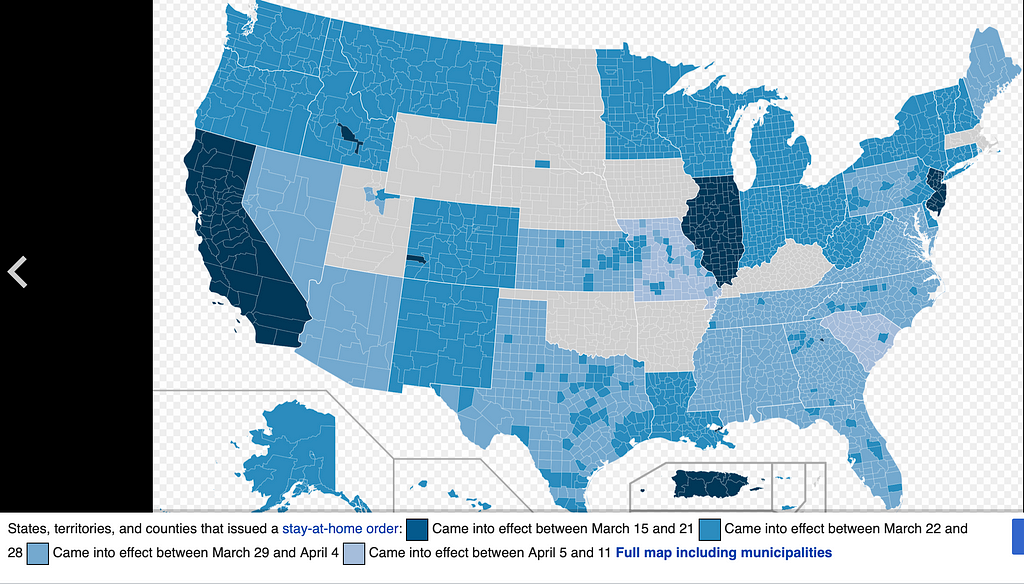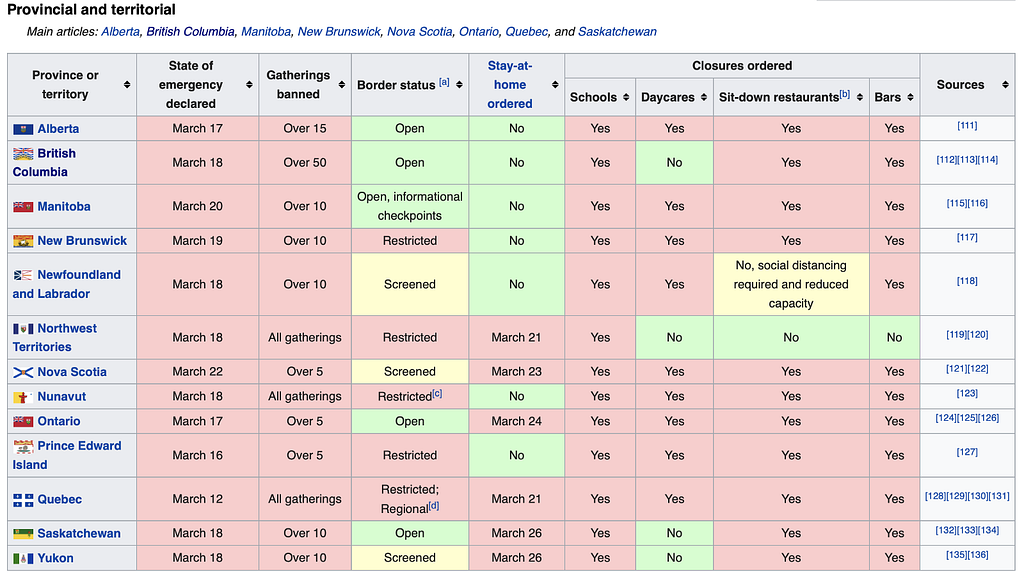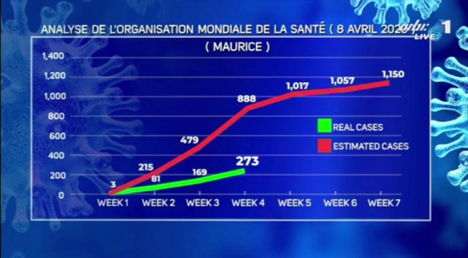The little country that could — and did — take on the Coronavirus
A small African democracy shows the Western World a thing or two about leadership and organization in controlling a pandemic

The tiny island nation of Mauritius — my homeland — has been hit hard by the Coronavirus. And, like many transplants to the United States, I am checking in daily with my family to see how they are doing.
But here’s the twist: they may be in a better place than I am right now.
That’s because the government of this diminutive “Third World” nation of 1.26 million people seems to have to put into place a plan that is actually working. In the past five days, no new cases have been detected.
I think I’m in a unique position to do a case study of three countries — the U.S., Mauritius and Canada — having resided in each nation for a number of years. As I compared each government’s response to the pandemic, I was left with the unmistakable conclusion that bigger is not always better.
Growing up in Mauritius, I never thought much of the local government. They did an OK job, but there have been scandals with flagrant evidence of cronyism and nepotism. But in the past weeks, time and again, I have been impressed as Mauritius outshined its North American counterparts in dealing with the pandemic.
Although I think Prime Minister Trudeau’s team is doing a reasonable job in Canada, the United States has proven to be inept at the federal level, although some state governors and county officials are demonstrating leadership.
A little slice of paradise

You probably have not heard of Mauritius, unless you remember reading about the Dodo bird in history class. Mark Twain visited the place, situated east of Africa in the Indian Ocean, and designated it “heaven on earth.” Roughly the size of Maui, and very similar in climate and terrain, Mauritius is the 10th most densely populated country in the world.
Most inhabitants are descendants of former slaves from Africa or indentured laborers from India, brought hundreds of years ago to work on sugar and tea plantations by the Dutch, French, then British empires. My family and other Chinese arrived in the middle of the last century, mostly to flee war in China.
Mauritius declared independence in 1967 and its political system, a hybrid of British and French, ranks as the only “fully democratic” government in Africa, according to one study. By the way, it ranks higher than the U.S. in that index.
The early response
The World Health Organization (WHO) was first notified of the novel coronavirus on Dec. 31, 2019. They did not declare it a global health emergency until Jan. 30. So I was impressed to find Mauritius started screening passengers landing at its international airport on Jan. 22, with nine passengers isolated in quarantine centers by Feb. 1.
The U.S. and Canada both started screening on Jan. 17, but only at select airports and only requiring symptomatic passengers to self-quarantine at home.
On Jan. 29, a few days after the U.S. and Canada had confirmed their first travel-related cases and yet still before WHO had declared emergency, Mauritius announced additional screening measures, including body temperature measurements, for passengers to and from China. It also set up a fast-track system for suspected cases, to minimize contact with other passengers and staff.
The next day, the Centers for Disease Control in the United States (CDC) confirmed the first case of community transmission in the U.S., prompting additional U.S. locations to start screening passengers from China. Canada made similar updates to its process.
Being a small island, one could argue that Mauritius had the advantage when it comes to screening and quarantining every passenger coming through its single airport.
However, even before this pandemic, all arriving passengers were required to report sore throats, fevers, coughs and other symptoms to the authorities. The health department would then diligently follow up on those with symptoms.
Mauritius receives about 1.3 million tourists per year and is among the 20 busiest airports in Africa. Screening passengers is no small undertaking, but when the economy is so heavily dependent on tourism, it makes sense, economically.
By March, there were still no confirmed cases of COVID-19 in Mauritius. While some locals were worried that the government was covering up the presence of the virus, the government was being cautious without being alarmist. For example, Independence Day celebrations on March 12 were canceled as a precautionary measure.
Targeting hot spots
As soon as South Korea, Iran and Italy started showing signs of outbreak, visitors from those countries were not allowed on Mauritian soil. Mauritians returning home from those countries were sent to a 14-day quarantine center, fully paid for by the government. The announcement was made on Feb. 28, at which point 24 individuals were isolated. Remember, this is before any cases had even been identified on Mauritian soil.
During the same time frame, Canada discouraged non-essential travel to Wuhan, where the outbreak originated in China, and re-routed planes from China to one of four international airports for screening. But no measures were taken to reduce traffic from other hot spots.
In the U.S., flights from China were also rerouted to a handful of international airports for screening. The federal government advised against flights to Hubei province, and discouraged non-essential travel to China. Again, no measures were taken to reduce traffic from other hot spots until mid-March.
Shutting it down
On March 18, Mauritius confirmed its first cases and the country did not hesitate in ordering a mandatory lockdown. No inbound commercial flights were allowed into the country except for repatriating Mauritians. No passenger flights at all were allowed in after March 22. Tourists could leave the island before then but no foreign nationals would be allowed entry until further notice.
As of March 5, Canada determined that it was too late to close the borders to China, reasoning that the virus had already spread to Europe and beyond. Of course, it could have just closed its borders completely at this point, but did not do so. Although Chief Public Health Officer Dr. Theresa Tam reported high compliance to the mandatory 14-day self-quarantines, those were imposed for symptomatic passengers only. It wasn’t until March 20 that Canada completely locked down.
On March 11, the U.S. closed its borders to all foreigners who had visited China, Iran and a number of European countries affected by the outbreak. There has not been any updates on the list of countries, except for a closure of Canadian and Mexican borders on March 20. U.S. citizens are discouraged from any non-essential travel. However, this is an advisory, not a restriction. Borders are still technically open and I still see quite a few incoming planes from my downtown Los Angeles apartment.
Curfew
In addition to the travel restrictions, Mauritius enacted a nationwide curfew. Those who could work from home were required to do so. If remote work was not feasible, the business was required to close but still pay employees their salaries. Only essential businesses are now allowed to remain open, and all those commuting to those businesses for work are required to have a permit to be on the move. Anyone found outside without such a permit is liable for fines and imprisonment.
Not every plan in Mauritius was flawless, but the government proved able to adapt to changing conditions. When the curfew created a surge of panic buying and crowded supermarkets, the government responded by ordering all supermarkets and bakeries to also close immediately. The next day, a plan to deliver food packs to those in need was announced.
A week later, supermarkets re-opened with strict guidelines. Surnames are split into three alphabetical groups. Two days of the week are assigned to each group. A national ID card, face mask, gloves, and your own shopping bag are now required to enter a supermarket. All shoppers must also undergo body temperature screening prior to entering and are given hand sanitizer upon entry.
Supermarket aisles are one-way only, and the floors are marked with 1-meter (3-foot) guides to help shoppers stay apart. Staples are limited per shopper; no hoarding is allowed. Shoppers have 30 mins to complete their purchase.
Shopping carts, credit machines and check-out counters are disinfected between each customer. Glass panels were installed at each cash register to protect the cashiers. Any supermarkets/convenience stores unable to abide by these rules are not allowed to open until they can do so. This is still in effect.
Like any working democracy, citizens can voice their opinions. Some disapproved of the radical measures that were put into effect with so little warning, while others complained about the country moving too slowly. Yet the majority of people responded positively to the plea of solidarity.
Mauritian businesses and government officials are being proactive in helping as well. Hotels volunteered their rooms for quarantine centers, ministers and members of parliament pledged to donate 10% of their salary to relief efforts. A sunglass factory converted to creating face shields for front-line workers. Doctors volunteered their phone numbers to help patients with minor concerns, at no charge, so that health centers can concentrate on viral cases.
As I struggle to find toilet paper, rice or flour among hoarders in the U.S., where it seems everyone is looking out only for themselves, it warms my heart to see the Mauritian people stand united in this battle.
In the U.S., California mandated the closure of all non-essential businesses on March 19 and was promptly followed by New York and a few other states. By the end of March, several state governors had mandated lockdowns, but to varying degrees of enforcement.
States such as the Dakotas, Nebraska, Iowa, Arkansas and South Carolina still have little to no measures in place. In some states, churches continue to hold church services. In Florida, youngsters flooded the beaches over Spring Break.
With the White House flip-flopping on its messaging on a daily basis, states have been left to fend for themselves. To this day, there is still no federally mandated lockdown, let alone strict shopping guidelines.

Canada also left it to the regions to mandate their lockdowns. All provinces have closed schools, most have closed sit-in restaurants and bars, but not all have ordered a full lockdown. Trudeau has been consistently vocal about the importance of staying home and social distancing. He did state that Canada’s response and eventual opening will be informed by scientific, evidence-based methods only.

Testing, isolation and contact tracing
Unlike the U.S. and Canada, Mauritius actually isolates every single positive case and then uses contact tracing to find additional positive cases.
Anyone testing positive is sent to dedicated hospitals. No visitors are allowed.
All hospital and health care staff dealing with the disease are essentially quarantined in designated hotels to prevent further spreading.
Any potentially contaminated individuals are quarantined and tested. After 14 days of quarantine, two consecutive negative tests at least 48 hours apart are required to be eligible to go home. The same requirement applies for recovered patients.
As of April 14, the testing rate per million in Mauritius is not as high as the U.S. or Canada, but higher than the U.K., France, South Africa, and most African countries. And Mauritius tests every suspected case, unlike Canada and the U.S.
In Mauritius, free hotlines have been set up to pre-screen anyone with concerns of infection. Lab testing is prioritized for those presenting symptoms such as cough, sore throat, fever. Next in line are people identified through contact tracing and then healthcare workers and other professionals in essential businesses.
In Canada, online tools for self-diagnosis have been set up in all provinces. Canadians are asked to self-isolate if symptomatic, and only go to healthcare facilities if recommended by a physician. Laboratory tests are not currently recommended for asymptomatic persons, even if they were identified through contact tracing. Instead, self-isolation is recommended.
Based on the government’s website, health officials have been conducting contact tracing for confirmed and probable cases, but the extent seems limited. Canada is currently looking for volunteers to ramp up its contact tracing capacity.
The U.S. has a process very similar to Canada’s, but there are signs that various states will ramp up their tracing capacity and make it a prominent tool in their fight against the coronavirus, as they did to fight SARS in 2003–2004.
Healthcare comparisons
Both Mauritius and Canada have universal healthcare and so tests and treatment are fully covered.
The United States does not have universal health coverage, leaving some 27 million Americans without protection even before this pandemic.
Many of the 17 million of Americans who have lost their jobs in the resulting economic downturn will at some point be cut off from their employer-sponsored healthcare.
Those without insurance who need medical help can end up in crippling debt, or even worse, denied treatment altogether, as was the case of the teenager who contracted the virus, was denied treatment and died simply because he had no insurance.
It is mystifying that one of the most advanced countries in the world does not consider healthcare a fundamental human right. This leaves the country’s vulnerable citizens even more exposed. Many of them are minorities, according to the CDC.
Addressing racism
When a few incidents targeting people of Asian descent surfaced, Canada’s Dr. Tam spoke out, as did many other officials.
In the U.S., Trump exacerbated tensions by intentionally referring to the “China Virus” instead of the internationally adopted COVID-19 or coronavirus.
It is worth noting that there were no racial incidents in Mauritius.
Although a minority of 2% of the population, Chinese Mauritians have cohabited peacefully with citizens of Indian, African, and European descent throughout the island’s history. I strongly believe that being taught about my fellow classmates’ religious rituals and beliefs in primary school greatly helped promote respect and tolerance by all. I never felt less Mauritian because I was a minority.
Language choices
Prime Minister Trudeau called for solidarity and has repeatedly deferred to public health and medical experts, making it clear that Canada is taking a rational, evidence-based approach to dealing with the pandemic.
The Trump administration made several war analogies, calling the virus an enemy. But at this point, the White House is mostly battling the state governors on how to proceed. While Dr. Anthony Fauci, the executive director of the CDC, has become a household name, there have been blatant attempts from the White House to censor the CDC and other agencies.
In Mauritius, the National Communications Committee has been holding daily briefings, led by health officials. Citizens are advised to be smart, work together and help those in need. The message consistently keeps the population informed and reassured. The language focuses on common sense, solidarity, patience, scientific logic, and compassion. No war rhetoric. No finger pointed at other countries or cultures. No blaming the media.
People vs. economy
All three countries have taken measures to sustain their economies. But are they putting their people or business interests first?
Tourism accounts for roughly a quarter of the Mauritian GDP. In the beginning, the population was worried that business would take priority. In late February/early March, Mauritius considered advertising more aggressively in the Australian and African markets to make up for the loss in travelers from Asia and Europe.
Yet, as soon as it was clear that this pandemic was going to affect the country, there was no hesitation to shut the borders and curb the spread of the virus. This is a country that imports practically everything. Every day, the lockdown is costing the Mauritian economy about 0.19% of the GDP, which has accumulated to 5.3% after 28 days.
When asked about reopening the economy, and potential lobbying from the business sector, the Prime Minister Pravind Jugnauth asserted that public health and safety come first, and that he will not compromise on that subject.
Canada, relying heavily on WHO and scientific data available, initially decided that transmission was unlikely. By the time WHO confirmed otherwise, the virus was a pandemic. The rationale then was that closing borders would not do much good, since the virus was already everywhere. Canada, the second largest country geographically, is resource rich, and can produce much of its food. Could the Canadian economy not have sustained the same approach as Mauritius?
For Trump, it has been clear from the onset that the economy — and re-election — are his top priorities. It took state governors to implement mandatory lockdowns to mitigate the threat.
One might argue that both Canada and the U.S. are much larger countries and could not do otherwise. However, the fact that they were able to mobilize their entire countries to go to war in World War II, Vietnam, Iraq, and federally mandate increased airport security after 9/11 suggests that, if they had the will, perhaps they could find the way.
Conclusion
One thing you learn very early on as a computer scientist is the difference between linear and logarithmic scales. Every additional day spent weighing the pros and cons of a lockdown results in exponentially more cases, increasing chances of overwhelming the healthcare system and causing a spike in death rates.
Mauritius’ swift action resulted in a very clear success as of this writing. For the past few days, no new cases have been reported. In the U.S. and Canada, by contrast, it is unclear whether they can even say when curve might flatten, let alone achieve zero new daily cases.
Now, before discounting Mauritius as some puny little island, please note that other countries in the region have also achieved zero positive cases per day, including poverty-stricken Madagascar, with a population of 26.3 million and a geographic size slightly larger than California.
It is worth asking why much more developed economies with vast resources were unable to bite the bullet and shut down completely as Mauritius did.
The nine Mauritian virus fatalities are tragic, but compare that to the U.S., as New York digs mass graves to cope with the staggering number of deaths. Canada is doing much better than the U.S., but is that the best it could have done, given the information at the time?
Since the first confirmed case on March 18, Mauritius has logged 324 positive cases and nine deaths. But WHO had originally estimated that Mauritius would have up to 1,017 cases at this point, well over twice what the country is now reporting. It has now been five consecutive days without positive cases, and it’s looking like the curfew might be lifted soon.

Mauritius knows well that protecting lives ultimately is good for the economy. That’s actually something we are taught in school: our country’s only true natural resource is the Mauritian people.
It’s ironic that the most modest of these three countries has been the most nimble and effective in protecting its people and showing the world how to handle a pandemic.
